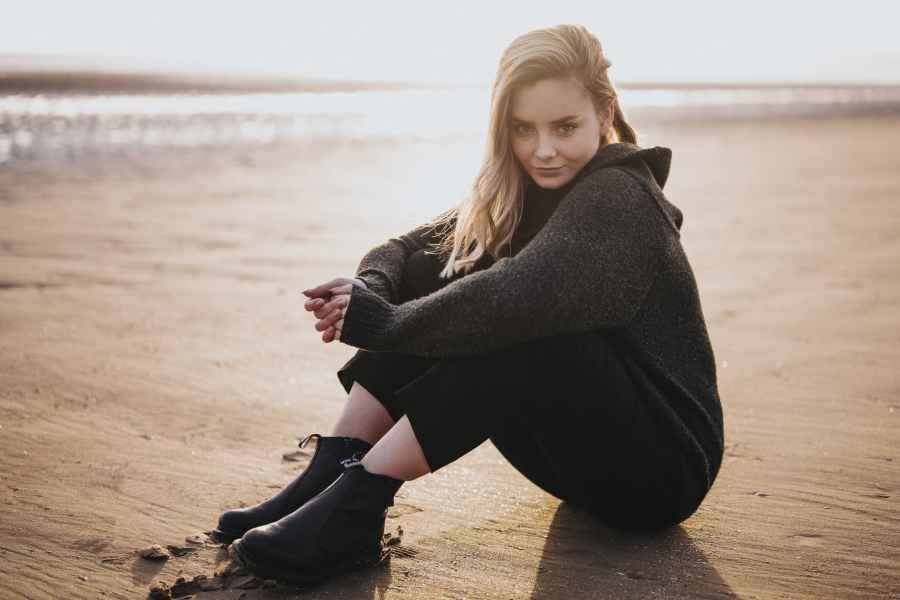Finding the right camera for portrait photography will make a significant difference to your people pictures. True, smartphones are gaining increasingly sophisticated portrait modes that simulate shallow depth of field, but to produce professional-quality portraits with depth, a high-quality camera and lens are required. Portrait photography is a tricky art to master, but capturing the character and charisma of a human subject is an immensely rewarding challenge.
We’ve focused on interchangeable-lens cameras for this guide, as most compact (ie fixed-lens) cameras cannot give the magical portrait combination of a short telephoto lens for flattering features and a large maximum aperture for throwing out the background. See our guide to the best lenses for portrait photography for help here.
If you’re new to portrait photography and aren’t sure what the technical terms mean, scroll to the bottom of this page where we’ve compiled a helpful explainer all about how to choose a good portrait camera.
We’ve picked out camera options for a range of budgets, with affordable options as well as the top-end models. There will be a great portrait camera here for you, regardless of your skill level and budget.
Here are our top recommendations for the best cameras for portraits and portrait photography…
The best cameras for portrait photography: quick list
Looking for the best deal on cameras for portrait photography? Not only will you find the best cameras for portraiture, but also some of the best camera deals, as our ‘Buy now’ buttons automatically take you to the best prices, from trusted retailers. You’ll also find a list of other retailers below each camera, so you can find the right deal for you.
- Best camera for portraits overall: Nikon Z7 II – Buy now
- Best portrait camera for beginners: Canon EOS R10 – Buy now
- Best portrait camera under $500/£500: Canon EOS 2000D / Rebel T7 – Buy now
- Best portrait camera under $700/£700: Olympus OM-D E-M10 Mark IV – Buy now
- Best portrait camera for under $1000/£1000: Sony A6400 – Buy now
- Best affordable Nikon for portraits: Nikon Z50 – Buy now
- Best affordable Fujifilm for portraits: Fujifilm X-T30 II – Buy now
- Best full-frame mirrorless for portrait photography: Sony A7R IVA – Buy now
- Best Canon camera for portraits: Canon EOS R5 – Buy now
- Best Fujifilm camera for portraits: Fujifilm X-T5 – Buy now
- Best Panasonic camera for portraits: Panasonic Lumix S5 II – Buy now
- Best full-frame DSLR for portrait photography: Nikon D850 – Buy now
- Best APS-C DSLR for portrait photography: Canon EOS 90D – Buy now
Want to know more? Read on as we run through the full specs of every camera on our list…
Best overall
Best camera for portraits overall: Nikon Z7 II

Amateur Photographer verdict
The Z7 II, like the Z7, feels fantastic in the hand and is a delight to pick up and use. Its image quality is still impressive despite offering no improvement over the Z7.- Features a much improved buffer performance
- Introduces dual card slots for backup, overflow and segregation
- Excellent handling and incredibly intuitive to use
- Face, eye and animal detection made easier to access
- EVF automatically disables when screen is pulled out
- A 1.08x crop is applied to 4K/60p video
- Viewfinder resolution doesn’t match its closest rivals
At a glance:
- $1,997 / from £2,499 body only
- Nikon Z-mount
- 45.7MP full-frame BSI CMOS sensor
- ISO 64-25,600 (expandable to ISO 32-102,400)
- 5-axis in-body image stabilisation
- 10fps continuous shooting (Single AF)
- Dual card slots (XQD/CFexpress and SD cards)
- Weather resistant
The Nikon Z7 II is a beast of a camera. While its spec falls below Nikon’s high end Z9 in video quality and continuous burst mode speed, it packs the same 45.7MP resolution. When you compare the price of the Z9 ($5,497 / £4,999) and Nikon Z7 II ($2,597 / £2,500) the latter seems like a great deal – particularly considering that portrait shooters don’t need super-fast burst speeds or ultra high-end video.
To entice the portrait photographer, the Z7 II includes 493 focus points and is fast to focus and process images. When we tested the camera in December 2020, we found its face and eye detection feature to be incredibly effective and were also impressed by the image detail and astonishing dynamic range that the camera can produce.
For any portrait photographer, whether professional or enthusiast, the Nikon Z7 II is an excellent choice. What clinches the top spot for it is the range of Nikon Z-mount lenses, which is expanding brilliantly and includes some absolutely dynamite choices for portraits, such as the lovely and not-too-expensive Nikkor Z 85mm f/1.8 S.
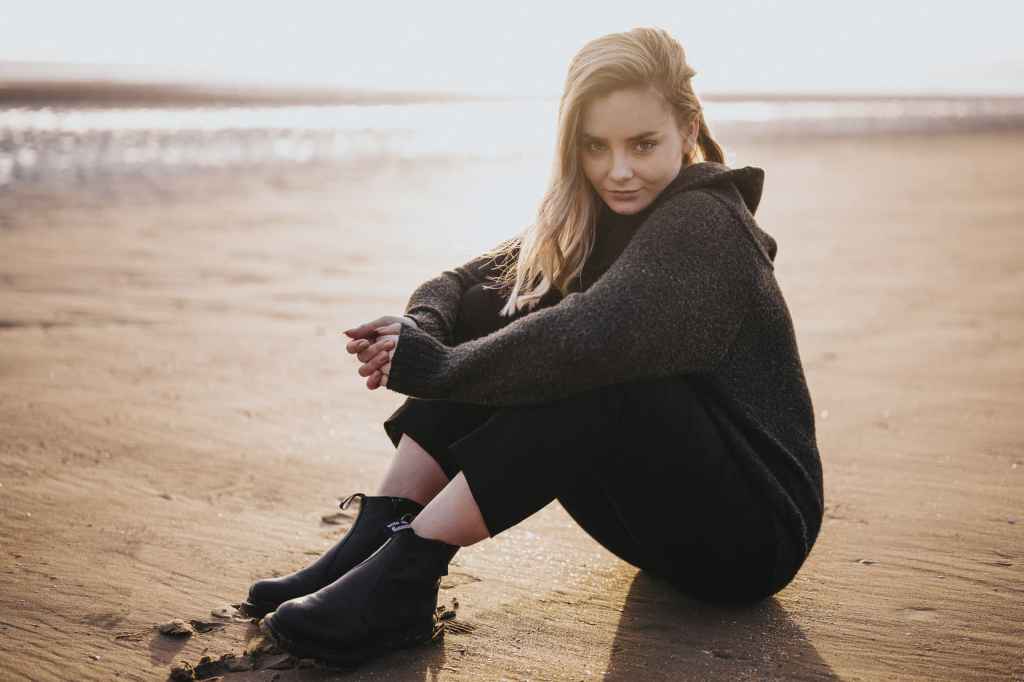
Read our Nikon Z7 II review
Best for beginners
Best portrait camera for beginners: Canon EOS R10
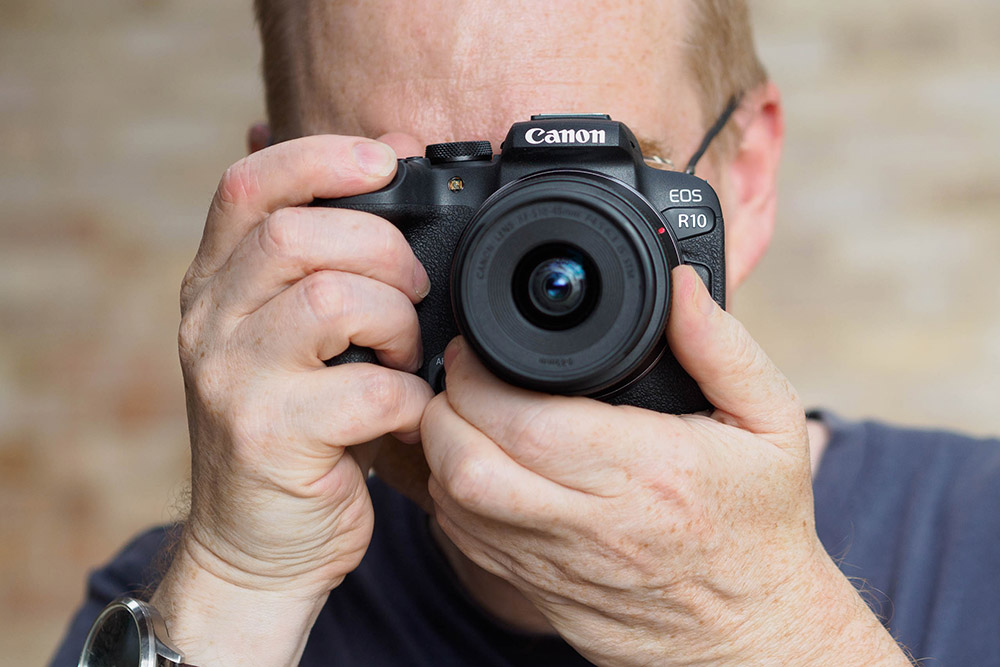
Amateur Photographer verdict
A neat little camera that handles well, delivers attractive images and, for the price, has superb autofocus and continuous shooting speed. Sadly, very limited in lenses compatible with it.- Compact size and light weight make it easy to carry
- Excellent control layout and handling, especially given the small size
- Subject detection autofocus works very well
- Very good image quality in both JPEG and raw
- Viewfinder is disappointingly small
- No in-body image stabilisation
- Extremely limited native APS-C RF-S lens range
At a glance:
- $879 / £797 body only
- 24.2MP APS-C sensor
- ISO 100-51,200
- 23fps shooting
- 4K 30p video
- 2.36m-dot viewfinder, 3in vari-angle LCD
For any beginner who wants to take the next step and upgrade to a mirrorless model the Canon EOS R10 is a great option. This camera is one of the smaller and lighter mirrorless cameras in the Canon collection and includes a host of features that will be useful for the portrait genre. This includes a large ISO range and 23fps burst mode.
Stand out features of the Canon EOS R10 include the superb autofocus system and opportunity to shoot high quality video (Full HD shooting at up to 120fps). It’s also possible to record 4K video at 60fps with a 1.6x crop.
This entry level model will attract both APS-C DSLR shooters who want to move to mirrorless and smartphone shooters wanting to progress with their portrait photography.
Read our Canon EOS R10 full review.
Best under £500
Best portrait camera under $500 / £500: Canon EOS 2000D / Rebel T7
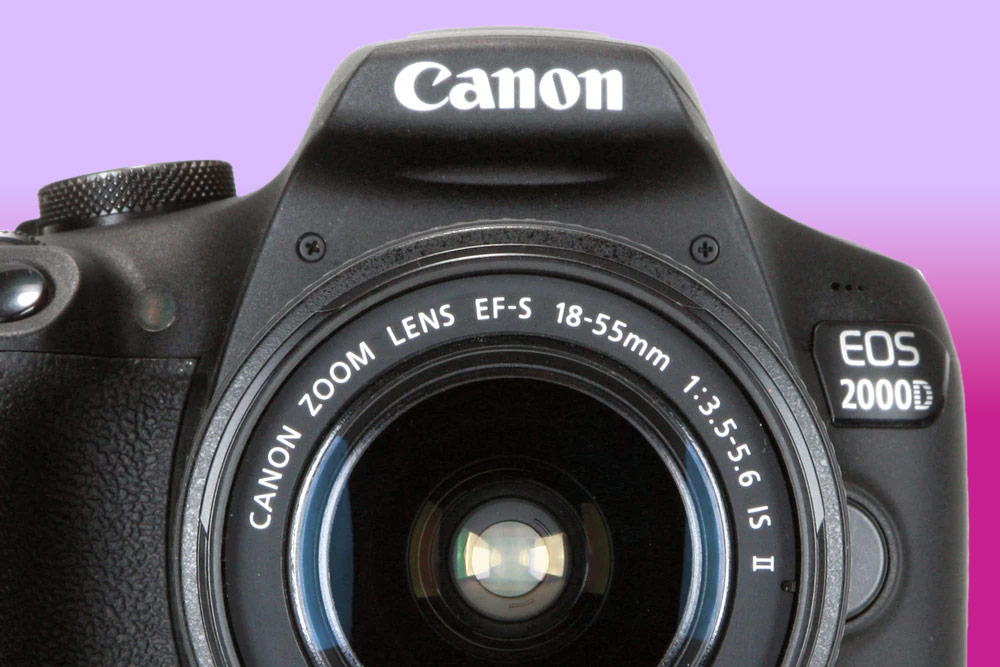
Amateur Photographer verdict
The Canon Rebel T7 / EOS 2000D is the middle child of a DSLR trio Canon released in 2018. A slight step up from the Canon EOS 4000D, it’s a good starting DSLR for beginners or those on a budget.- Great image quality for the price
- Tons of great lenses
- DSLR form factor with optical viewfinder
- Focuses slowly in Live View
- Pretty basic feature-set
At a glance:
- $479 with 18-55mm lens / £325 body only, £356 with 18-55mm lens
- 24.1MP APS-C sensor
- ISO 100-6400
- 3fps shooting
- Full HD video
A basic, no-frills DSLR, the Canon EOS 2000D is a good value camera, and it takes great portraits without breaking the bank. Many of the less edifying aspects of its feature set, like its rudimentary autofocus system and slow burst rate, won’t trouble portrait photographers, as your subjects should be relatively still. Furthermore, you still get a 24.1MP APS-C sensor, which will provide a significant jump in raw image quality compared to what you’d get from smartphones or compacts.
The real ace in the hole for the EOS 2000D, however, isn’t really the camera at all – it’s the lenses. Specifically, the EF-S lens mount that gives you access to the huge range of large-aperture optics for the Canon DSLR system. If you want to build a portrait setup on the cheap, and experiment with all manner of different focal lengths and lens types, this is one of the most cost-efficient systems to do it in – as long as you’re comfortable shopping second hand.
Read our full Canon EOS 2000D / Rebel T7 review.
Best under £700
Best portrait camera under £700/$700: Olympus OM-D E-M10 Mark IV

Amateur Photographer verdict
For beginners in photography and videography, the Olympus OM-D E-M10 Mark IV is a great mirrorless option. It is lightweight, intuitive to use, and produces crisp, punchy images.- Excellent JPEG image quality with extremely attractive colours
- Stylish design and well laid-out, tactile controls make it a pleasure to use
- Extremely effective in-body stabilisation keeps pictures sharp
- Good set of useful advanced features
- Supported by fine set of small, affordable lenses
- Raw image quality lags behind APS-C peers
- Below-camera selfie screen is incompatible with tripod use
At a glance:
- $700 / £649 body only
- 20MP Micro Four Thirds sensor
- ISO 200-6400, ISO 80-25,600 (extended)
- Up to 15 frames per second shooting
- 121-point contrast-detect AF
- 5-axis in-body stabilisation
For any budding portrait photographer, the Olympus OM-D E-M10 Mark IV is an excellent choice. This camera sits at the entry point level of the OM-D range and includes excellent features, such as the enhanced face and eye priority autofocus to ensure you capture pinpoint-sharp results.
The weight of this camera is a mere 383g and other stand out features such as the 121-point contrast-detect AF system and 5-axis in-body stabilisation all perform well and enhance the shooting experience.
Check out our guide to the best Olympus cameras to see what else Olympus / OM System has to offer.
Read our Olympus OM-D E-M10 Mark IV review.
Best under £1000
Best portrait camera under $1,000 / £1,000: Sony A6400

Amateur Photographer verdict
While this may be a good choice for those looking for the best possible AF system and sensor, it does have drawbacks such as a slightly dated body design and no in-body image stabilisation.- Excellent AF tracking feature
- Large ISO range
- Excellent image quality in almost any shooting situation
- High level of control customisation available
- Compact size
- Control setup is poorly-configured out of the box
- Minimal touchscreen functionality
- No in-body image stabilisation
At a glance:
- $898 / £779 body only
- 24.2MP APS-C CMOS sensor
- ISO 100-32,000
- 11 fps shooting
- 2.36m-dot electronic viewfinder
- 3in, 921,600-dot tilting touchscreen
The Sony A6400 bridges the gap between Sony’s popular full-frame compact system cameras and their APS-C line-ups. We found the 24.2MP APS-C CMOS sensor to produce excellent results and if used with something like a prime 50mm lens, which equates to a 80mm on full frame, you can’t really go wrong with your portraits!
When we reviewed the Sony A6400 back in 2019, we gave it 4 stars, as whilst the camera performed well in terms of image quality, there were a couple of niggles such as the slightly dated body design and lack of in-body image stabilisation. For under $1,000 / £1,000, though, you can’t have it all!
Read our Sony Alpha A6400 review.
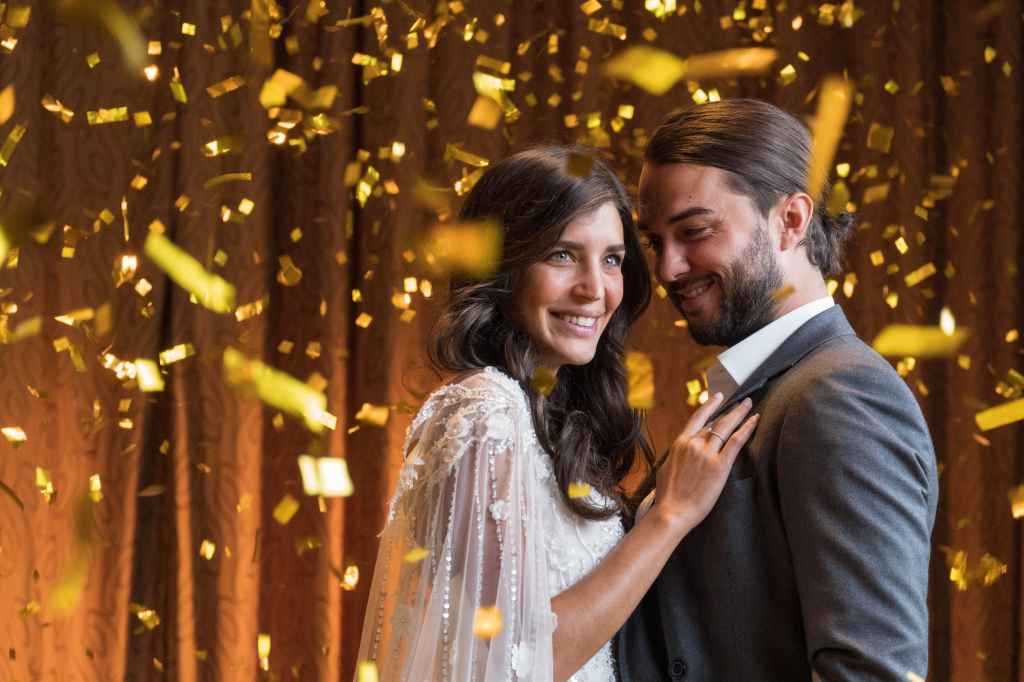
Best affordable Nikon
Best affordable Nikon for portraits: Nikon Z50

Amateur Photographer verdict
The Z 50 manages to preserve the look, styling and excellent handling characteristics of the Z 6 and Z 7 in a lighter and more compact body.- Compatible with wide range of excellent lenses
- Responsive AF system
- Tilting touchscreen
- Affordable
- Lacks in body image stabilisation
- Short battery life
At a glance:
- from $480 / £599 body only
- 20.9MP APS-C sensor
- Nikon Z-mount
- 11fps continuous shooting with AE/AF
- Tilting touchscreen, 2.36m-dot viewfinder
- 4K video at 30p
The Nikon Z50 is a 5 star camera and includes many features that will impress the portrait shooter like a tilting touchscreen, 11fps burst mode, and a 20.9MP APS-C sensor. The Nikon Z50 is compatible with Nikon’s range of Z-Mount lenses, and in their current Nikkor Z mount lens collection, Nikon have three DX format lenses and 26 FX format mirrorless lenses that are still compatible with the DX sensor. You can also use F mount lenses with a FTZ adapter, giving you more options when it comes to lens choice.
The Nikon Z50 will appeal to beginners and enthusiasts wanting to progress with their photography without having to cost a fortune. In our 2019 review, we found the electronic viewfinder and responsive touchscreen to enhance the shooting experience, and was impressed by the 11fps continuous shooting and responsive autofocus system.
Read our Nikon Z50 Review.
Best affordable Fujifilm
Best affordable Fujifilm for portraits: Fujifilm X-T30 II
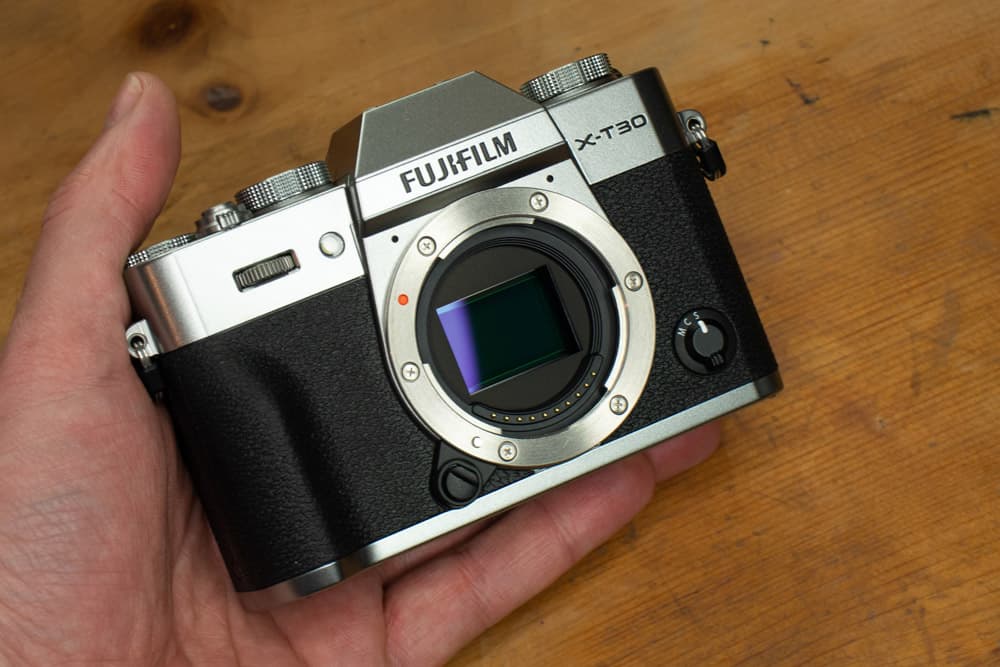
Amateur Photographer verdict
Slightly improved over the original, but with a lower price point, the X-T30 II would make a great mirrorless camera for those looking for excellent image quality, in a compact, and portable camera.- Great JPEG results straight from the camera, with lovely colours
- 20fps – 30fps continuous shooting (26.1MP/cropped/electronic)
- Lacks in-body image stabilisation
- Small joypad, easy to accidentally press Q button
At a glance
- $899 / £799 body only
- 26.1MP X-Trans CMOS IV Sensor
- ISO 80 – ISO51200 (extended)
- Speed: Up to 30fps with electronic shutter (cropped), 20fps uncropped
- Screen 3inch 1.62M-dot, tilting touchscreen
- Video 4K CINE/UHD 30,25,24fps video recording
- Wi-Fi and Bluetooth built-in
- Available in silver/black or all-black
The Fujifilm X-T30 II is a versatile camera that would suit any hobbyist or enthusiast portrait photographer and is the updated version to what was previously Fujifilm’s best selling and most popular camera in the X-series range, the X-T30.
For portrait photographers, the 26.1MP X-Trans 4 CMOS sensor produces excellent results and the camera offers a large ISO range from ISO80 (Low), up to ISO51200 (Extended). The camera also comes with face/eye detection AF and its autofocus system, for a camera of this level, is responsive and fast to react.
The Fujifilm X-T30 II supports the X-Mount, and there’s an extensive range of Fujifilm lenses available – both premium lenses available (XF), and more affordable lenses available (XC) – as well as some options from third-party manufacturers, including Samyang, Sigma and Tamron.
Read our Fujifilm X-T30 II Review.

Best full-frame mirrorless
Best full-frame mirrorless camera for portraits: Sony A7R IVA
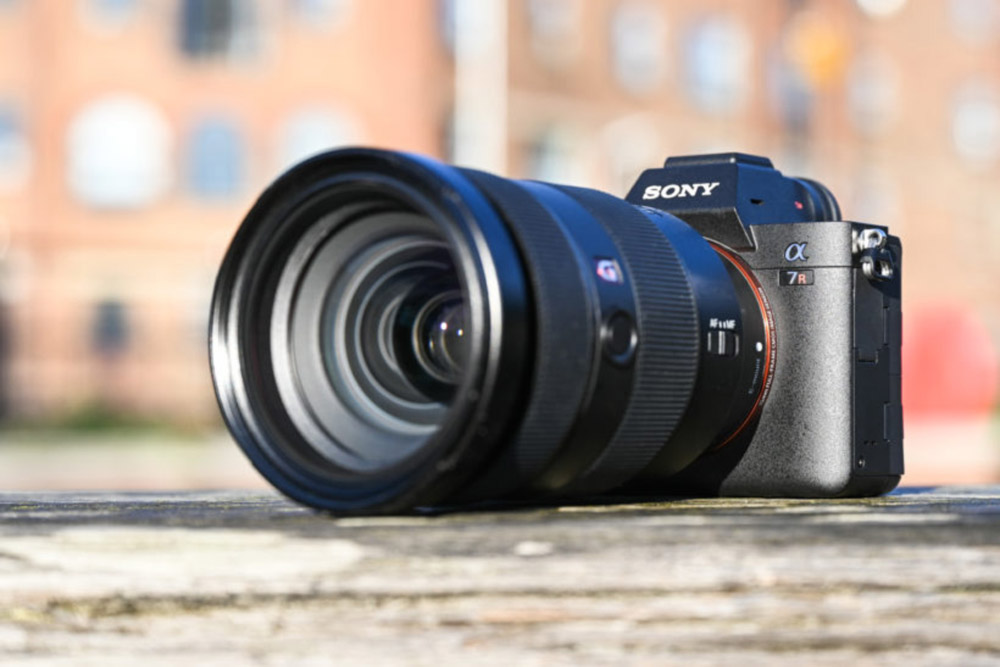
Amateur Photographer verdict
The A7R IV is an incredibly powerful mirrorless camera that sets a new benchmark. The resolution may be overkill for many amateurs but pros will likely be tempted.- Incredible 61MP image resolution
- Excellent AF system
- 10fps shooting burst mode
- Host of top end features
- Impressive ISO range and low noise
- Expensive
- Memory card fills up quickly due to large resolution sensor
At a glance:
- $3,198 / £2,999 new body only, version A7R IVA
- $1,929 / £1,749 used body only
- 61MP full-frame CMOS sensor
- ISO 100-32,000 (expandable to ISO 50-102,400)
- 10fps continuous shooting
- 5-axis in-body stabilisation
- 5.76-million-dot EVF
- 3in, 1.44-million-dot tilt-angle screen
- 4K/30fps video
If you’re after a full-frame large-resolution camera for your portraiture photography, you can’t go wrong with the Sony A7R IV. This camera supports a whopping 61MP full-frame CMOS sensor and includes a burst mode shooting capability of 10fps, which, as a package, is pretty impressive.
In our 2019 review we awarded the Sony A7R IV with a top 5 stars and for good reason. We found the image quality to be remarkable and the dynamic range astonishing too. At the low end of the ISO range the ability to pull out immense detail from dark shadows without excessive noise creeping in was noted.
We were also impressed by its AI-based real-time autofocus, and when tested on a portrait shoot it accurately demonstrated how good it was at identifying a face within the frame and immediately locked onto the eyes.
For any pro or serious portrait hobbyist photographer, the Sony A7R IV should be at the top of your list. The Sony A7R IV is widely available on the used market, but the variant A7R IV A body is available for $2,999 / £2,999.
Sony has since released the A7R V, which keeps the same sensor but adds new features like a powerful subject-recognition autofocus system, a higher-res viewfinder and a more effective stabilisation system. We’re sticking with the A7R IVA as our recommendation for now, as these features don’t really do enough for portrait photographers to justify a $1,000 / £1,000+ price hike.
Read our Sony Alpha A7R IV review.
Best Canon
Best Canon camera for portraits: Canon EOS R5

Amateur Photographer verdict
The sensor and highly effective IBIS system deliver images of exquisite quality. Intuitive and a joy to use, this is one of the best mirrorless cameras that Canon have ever made.- Outstanding image results
- Performs well in lowlight
- Stunning electronic viewfinder performance
- Supports use of EF/EF-S lenses via adapter
- Expensive
- Rather power hungry
- High-resolution video generates a lot of heat
At a glance:
- $2,999 / £3,149 body only
- 45MP Dual Pixel CMOS AF sensor
- DIGIC X image processor
- ISO 100-51,200 (expandable to ISO 50-102,400)
- 5,940 selectable autofocus positions
- 5.76-million-dot electronic viewfinder
- 8K/30P, 4K/120p, Full HD 60p video
- Twin card slot (CFexpress and SD)
The Canon EOS R5 is another cracker of a camera and full of outstanding features that any pro or serious enthusiast will appreciate. These include the 45MP full frame Dual Pixel CMOS AF sensor that performs superbly, and the R5’s handling of noise at high sensitivity settings. You can expect clean, noise-free images between ISO 50 and ISO 800. Luminance noise starts to appear at ISO 1600; however it’s only apparent under 100% magnification, with a critical eye at that.
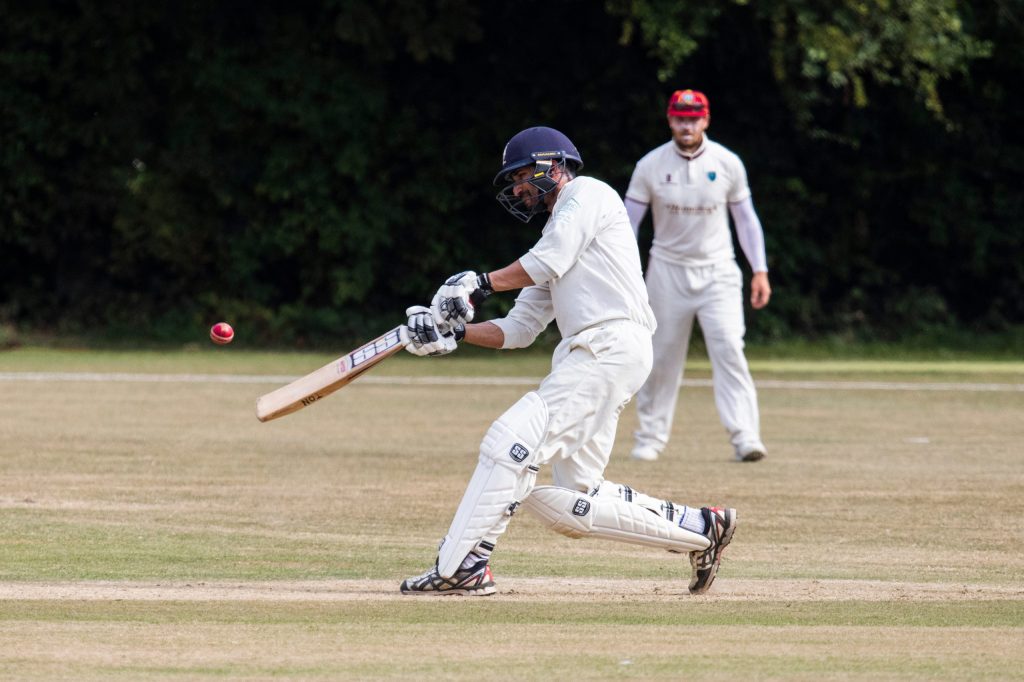
Compared with lower end mirrorless Canon cameras the R5 is far more responsive at identifying people’s eyes and faces from greater distance, and the AF select button and joystick can be used to prioritise which face or eye you’d like the camera to focus on.
If the Canon EOS R5 is way off your budget but you want to stick with the same brand look at the Canon EOS RP instead as this is a budget friendly full frame option. It doesn’t compete with the R5 in terms of features and image quality, however it is far cheaper at $799 / £1,049.
Read our Canon EOS R5 review.
Best Fujifilm
Best Fujifilm camera for portraits: Fujifilm X-T5
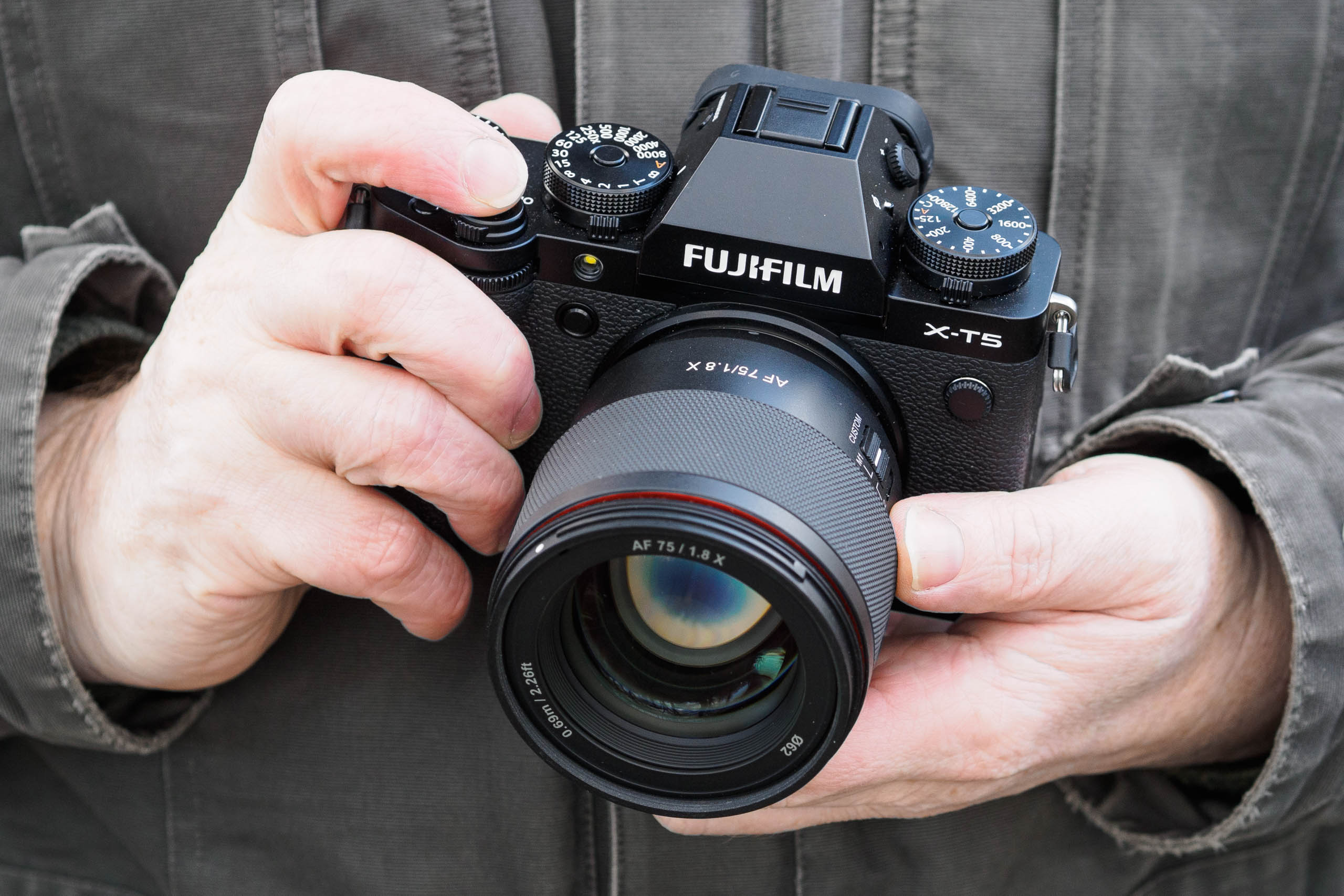
Amateur Photographer verdict
Few cameras match the Fujifilm X-T5 for enthusiast photographers at the price. Resolution, all-round spec, and charming looks and handling make it hard to beat at the price.- Very capable subject-detection autofocus
- Effective in-body stabilisation (IBIS)
- Gives access to extensive X-mount lens range
- 40MP files may be overkill for some users
- Limited full-resolution raw buffer
- Ineffective high-res multi-shot mode
At a glance:
- $1,699 / £1,449 body-only
- 40.2MP APS-C X-Trans CMOS 5 HR sensor
- ISO 125-12,800 (standard); ISO 64-51,200 (extended)
- 15fps shooting (mechanical shutter, full-resolution); 20fps (electronic shutter, 1.3x crop, 24MP file)
- 6.2K 30p / 4K 60p video
- 5-axis in-body image stabilisation
- 3.69m-dot EVF, 0.8x magnification
- 3in, 1.84m-dot 3-way tilt LCD
The Fujifilm X-T5 delivers an all-round package for enthusiast photographers while also an affordable option. Among its key strengths are a reliable AF system, ability to shoot high quality images at high ISO and effective image stabilisation.
In our review of the Fujifilm X-T5, we found it a joy to shoot with, thanks to its analogue controls, excellent viewfinder, and 3-way tilting screen. It delivers superb image quality, with stacks of resolution, plenty of dynamic range, good high-ISO performance and effective image stabilisation. Plus, that lovely Fujifilm colour rendition.
Read our full Fujifilm X-T5 review.
Best Panasonic
Best Panasonic camera for portraits: Panasonic Lumix S5 II

Amateur Photographer verdict
The Lumix S5 II is a delight to use with really helpful menu innovations, controls and features. With great video too, these are great achievements in a compact camera.- Snappy autofocus with reliable eye detection
- Compact and well built
- Expanding, high-quality lens range
- Default JPEG output a little dull
- May not be worth it if you don’t shoot video
At a glance:
- from $1,598 with lens kit / £1,600 body only – £2,299 with 24-105mm lens
- 24.2MP full-frame sensor
- ISO 100-51,200 (standard)
- 5-axis in-body stabilisation
- L-mount
The Lumix S5 II is a member of Panasonic’s full-frame mirrorless family, comprising cameras that use the L lens mount developed in conjunction with Leica and Sigma. The headline development of the Lumix S5 II was its long-awaited introduction of phase-detection autofocus; a much faster and more reliable system than the contrast-detection system Panasonic had depended upon previously. The Lumix S5 II also benefits from Panasonic’s highly effective face- and eye-detection modes, which should be more useful to portrait shooters than the AI-powered ‘Human’ subject-detection mode.
As we found in our review, the Lumix S5 II’s 24.2MP sensor produces images of excellent quality. It’s really more of a RAW camera than a JPEG one – the in-camera processing produces images that are perhaps a little dull, but you can produce some really vibrant-looking stuff if you’re willing to put in a little work in post-production. In terms of the body, the S5 II is a generally well-designed camera with extensive customisability and a robust construction. The stabilisation is highly effective, which is handy if you’re shooting handheld.
The L-mount lens range is continuing to expand, and any portrait photographer will have no shortage of superb-quality lenses to choose from. Bear in mind that the Lumix S5 II is also kitted out with extensive video features – if you have no interest in video at all, you may get more for your money with something like the Fujifilm X-T5.
Read our full Panasonic Lumix S5 II review.
Best full-frame DSLR
Best full-frame DSLR for portrait photography: Nikon D850

Amateur Photographer verdict
The Nikon D850 is the perfect blend of high-resolution, speed and performance. It is possibly the high-water mark of DSLR design – a classic in the making.- Sensor resolves exceptionally fine detail
- Super-fast autofocus and silent shooting in Live View
- Inherits AF toggle from the D500 for fast AF point positioning
- Impressive battery life with EN-EL15a battery
- Bulky and heavy
- Lacks on-chip phase detection AF in Live View
- Touchscreen doesn’t allow users to adjust key exposure settings
At a glance:
- $2,397 / £2,399 body only
- 45.7MP FX CMOS Image Sensor
- ISO 64 to 25600 in steps of 1/3, 1/2, or 1 EV
- Max output resolution: 8256×5504 pixels
- Video 4K (3840×2160) up to 30p, Full HD (1920×1080) up to 60p
- Weight 1005g with battery and card
Still a favourite amongst many DSLR shooters, the Nikon D850 is a superb camera. Even as mirrorless takes over, this camera holds its own and is still used by many pros. Its massive 45.7MP full frame image sensor that captures outstanding images is the main reason; with other enticing features such as silent shooting in Liveview mode, a fast AF system and a wide ISO range.
This camera is ideal for any portrait shooter, from those going on location to those shooting in a studio. On the downside, the body is considerably heavier compared with most mirrorless models. On the plus side, the battery life lasts far longer, and the camera is considerably cheaper than the higher-end mirrorless cameras. For those on a budget, a second-hand model can be picked up for under $2,000 / £2,000, which is an absolute bargain!
Read our Nikon D850 review.
Best APS-C DSLR
Best APS-C DSLR for portrait photography: Canon EOS 90D

Amateur Photographer verdict
The Canon EOS 90D is one of the best enthusiast DSLRs around at the moment and for the price you get plenty of camera for your money.- Continuous burst at 10fps
- Long battery life
- Uncropped 4K video capture
- High resolution images
- Easy to hold and operate
- Limited capability with kit lens
- Single memory card slot
At glance:
- $1,199 / £1,700 with 18-135mm lens
- 32.5MP APS-C CMOS sensor
- DIGIC 8 image processor
- ISO 100-25,600 (expandable to ISO 51,200)
- 10fps continuous shooting
- 220k pixel RGB+IR metering sensor
- Dual Pixel CMOS AF with Eye Detection AF
- Microphone and headphone input
- 1300-shot battery life
The Canon EOS 90D is marketed by Canon at wildlife photographers. However, we think this APS-C DSLR is appropriate for portrait photographers too, for several reasons. Firstly the 32.5-million-pixel CMOS sensor performs superbly and captures detailed images. The camera is fast to focus and also includes a burst mode feature that is capable of firing off 10fps. This is great for capturing action portraits of children playing or running around.

Ergonomically, the 90D feels great too. We found in our review the large handgrip lets you wrap your hand around it to get a secure hold. This is useful when shooting using a heavier lens such as a 70-200mm f/2.8.
Although we are still not sure of the future of DSLRs, for the time being there are still plenty of compatible lenses with this system, both new and second hand. To get the most from the 90D you’ll want to invest in some better EF-mount glass as the kit lens it is sold with will not deliver the best image quality.
Read our Canon EOS 90D review.
How to choose a camera and lenses for portrait photography
There are two aspects to take into account to achieve amazing portraits. The first is the type of lens you are using, and the effect this will have on your subject. To capture flattering facial features, use a lens with a longer focal length as it compresses a subject’s features rather than emphasises them like a wide-angle lens will do.
When it comes to purchasing a new camera for your portrait photography, look at the compatible lenses available as this will influence your final decision. Most portrait photographers aim to have something like a 50mm, 85mm or 100mm prime lens in their bag and possibly a 70-200mm zoom lens as well. Have a look at our guide to the best portrait lenses.
The second consideration is what image sensor type the camera supports. So, what is the best sensor size for portraits? Dreamy bokeh background blur that is desirable in portraiture photography is easier to achieve on a full frame image sensor. But that’s not to say APS-C and Micro Four Thirds models should be dismissed. These types of cameras are often cheaper, and with the right lens are quite capable of producing excellent results.
Background blur is also affected by other factors such as how far your subject is placed from the background and your lens choice so don’t be put off by an APS-C or MFT model. For more information on sensor size, have a look at our guide to APS-C vs Full-Frame (and MFT) sensors.
Once you’ve found the best cameras for portraits, have a look at our guides to great portrait photography:
- Complete guide to portrait photography
- Fine art portrait photography
- Best portrait advice from the pros
- The best lenses for portrait photography
Looking for portrait inspiration before you start clicking? Check out some amazing portrait photography below:
- Alicia Vera photo story: On loss and coping with mother’s Alzheimer’s diagnosis
- Aneesa Dawoojee wins Power of Photography Award at AP Awards
- BJP announces the Portrait of Britain Vol.5 Winners
- Aliz Kovacs-Zoldi: how plant collecting became my photo project

